It might be true that nobody walks in LA; however, McKay Lodge Laboratory Conservators, Marcin Pikus and Stefan Dedecek do perform restoration of mosaic murals in Los Angeles, California. The mosaic murals: Celebration of Our Homeland and Recognition of All Foreign Lands, 1963 by artist Charles Richard Haines are installed on the face of the Federal Building on North Los Angeles Street. The group of mosaic murals also includes a third mural, Of the People, by the People, for the People by Haines located indoors.
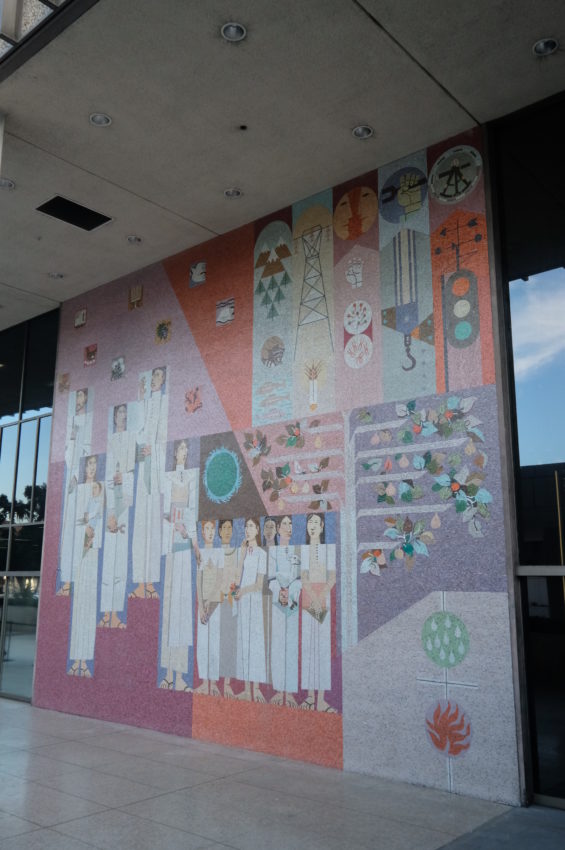
Each mosaic mural is composed of colorful tesserae and they are laced with symbolic imagery. While Of the People, by the People, for the People only required a surface cleaning to remove soiling, the other two Celebration of Our Homeland and Recognition of All Foreign Lands required some restoration of the mosaic murals.
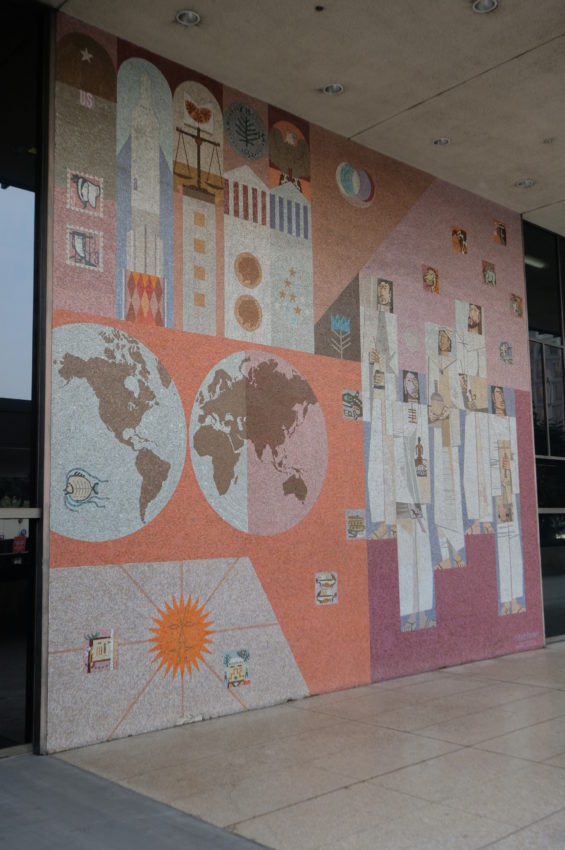
Both mosaic murals had areas of lost tesserae, cracks, and an accumulation of grime on the surface. Larger losses located along the bottom of the murals were also observed in the backing material. In addition, though all three murals are accessible to the public, the two exterior mosaics are more susceptible to vandalism since they are located on a public street. While some artwork features chewing gum, gum found on the surface of the mosaics as well as surface stains and missing tiles were, at least in part, the result of public interaction.
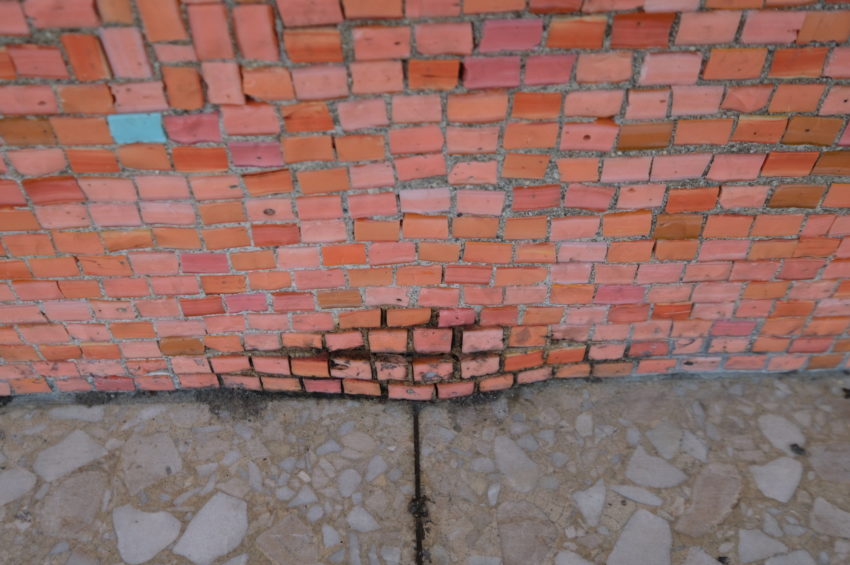
The restoration of the mosaic murals in Los Angeles began with cleaning the surface with a dilute solution of a non-ionic surfactant in water applied with soft-bristle brushes and sponges, then rinsed with water to remove any remaining residues.
This cleaning process removed years of dust, particulate and grime on the surface of the mosaic murals. Areas of tenacious grime, unknown accretions and chewing gum were further removed with common solvents. The restoration of the mosaic murals in Los Angeles continued once the surface was clear of dirt and debris.
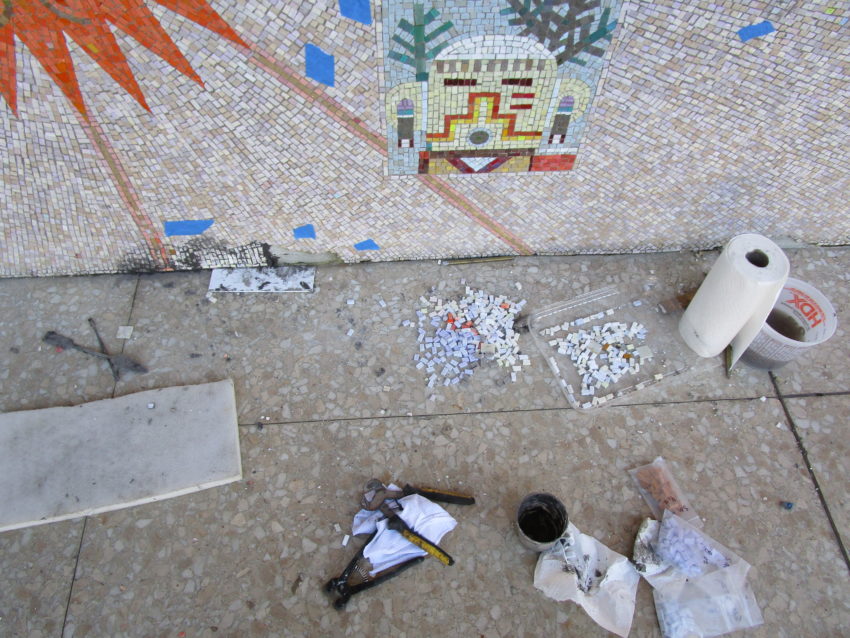
Conservator Pikus addressed missing tesserae, damages, cracks and other losses in the backing material. First, the missing tesserae need to be matched so that fills are not visible at the normal viewing distance after treatment. The color, shape, and thickness of the new tesserae were carefully selected to match the original mural tiles from hand-crafted Italian mosaic tiles by di Mosaico.
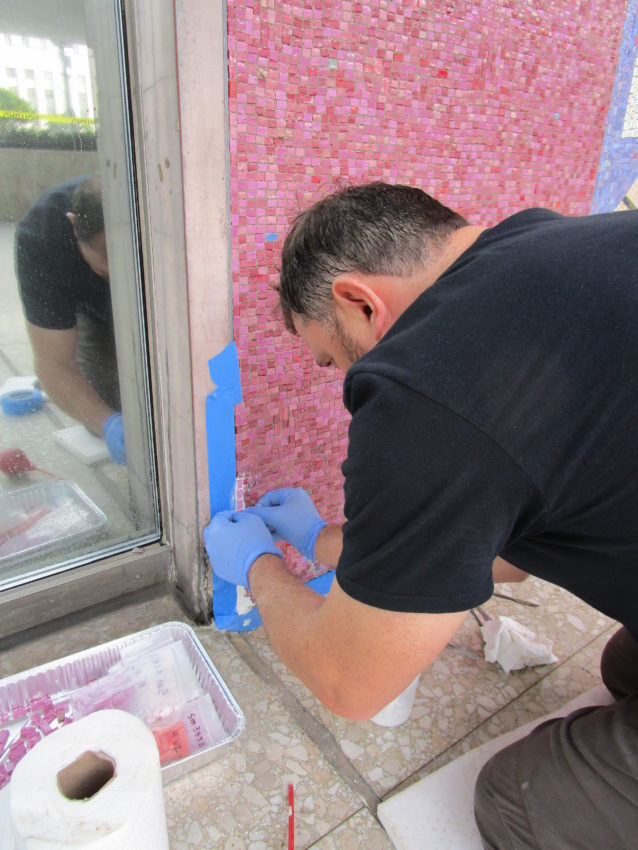
Conservator Pikus then attached the new tesserae, filling in the losses with new tile to create a more visually continuous surface. Cracks and other damages were filled with a restoration-grade mortar. After the restoration of the mosaic murals in Los Angeles, the surfaces were free of soiling and the losses were now filled with new tesserae that matched the color and pattern of the existing mosaic.
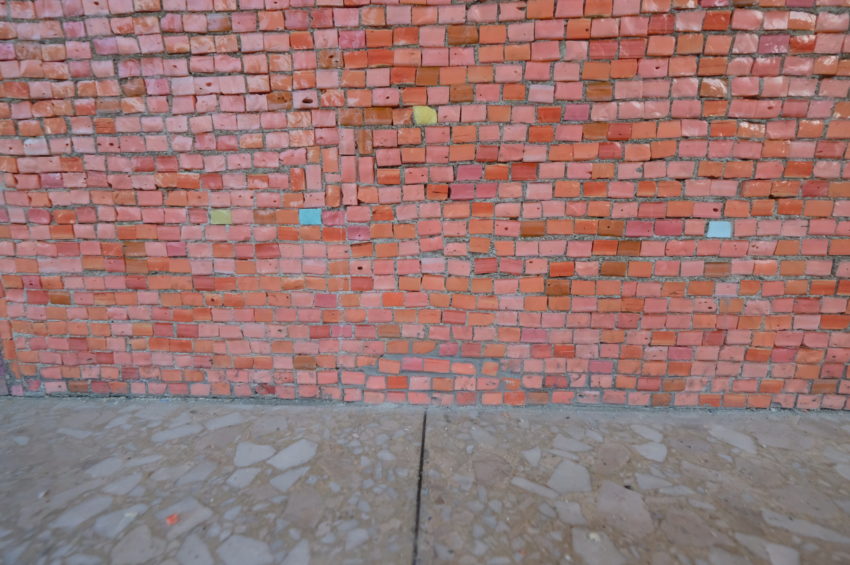
If you do find yourself walking in L.A., the mosaic murals by Richard Haines can viewed by the public at the 300 North Los Angeles Federal Building. The building itself is also worth a visit as it is listed on the National Register of Historic Places.
